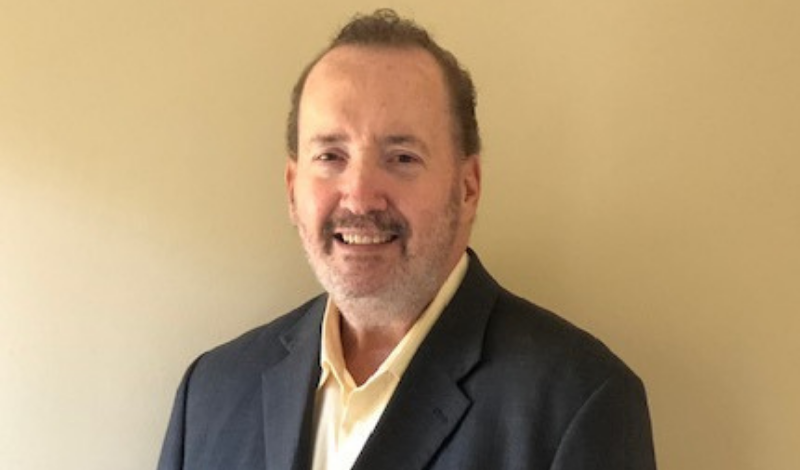
“Lung cancer becoming a chronic disease,” is a dream of Dr. Michael Weitz. This emergency room physician attributes new research in detection along with new treatments are moving towards this reality.
In 2005, then 49-year-old Michael Weitz was having difficulty swallowing. When taking a drink he would feel discomfort in his chest. As an emergency room physician, he knew more than the average bear about possible causes, and thought it might be GI related. When that testing came back negative, he requested a chest x-ray. His thinking: this was lymphoma or esophageal cancer. He never dreamed of lung cancer. Even as a physician, he, too, was under the misconception that one had to have been a smoker – past or present – to get such a diagnosis.
The x-ray showed a slight abnormality on the left side. It was slight enough that his medical team recommended that he do nothing and revisit in three months. Whether due to his medical training or a gut instinct, he took advantage of his professional connections and was able to get a CT scan. The radiologist reported back to him: “You’ve got some disease, but it doesn’t look like cancer.”
Unsatisfied with the vague diagnosis, he saw a pulmonologist. He, too assured Michael that it was not cancer. Yet, albeit reticently, he agreed to perform a bronchoscopy. Michael had Stage 3B Non Small Cell Lung Cancer.
The Treatment Options
A surgeon explained that the extent of the disease deemed it inoperable. Yet, out of professional courtesy, he agreed to reconsider surgical intervention once Michael had pursued the traditional course of chemotherapy and radiation. When this yielded zero movement of the needle – the disease neither shrunk nor grew – they scheduled surgery to remove the left upper lobe.
During the surgery, Michael’s doctor discovered that the disease had spread further than he’d thought. He had to remove the entire lung. And, to make matters worse, even then the margins were not clear. Quickly, Michael’s lung cancer spread to both his bones and his brain. He underwent whole brain radiation followed by stereotactic radiation to attack the hot spots which were, by then, too numerous to count. For the following year, with the help of various clinical trials, Michael remained stable. Until he wasn’t.
Biomarker Testing: A Last Resort
Treatment options were quickly becoming exhausted. One night, Michael’s mother happened to see a story on the nightly news about a lung cancer patient who was near death when, as a last hope, had biomarker testing. The results of the testing showed that he carried the ALK mutation. At the time, this was the cusp of targeted therapies and personalized medicine. The results allowed him to try a new medication which reduced his disease by 80%. Despite his protestation – both as a physician and a patient – that it was “a needle in a haystack” that he would carry this mutation, his mother insisted that he be tested. That testing changed the course of Michael’s lung cancer journey.
At the time, doctors and labs equipped to do the testing were scarce. Michael finally found a facility clear across the country; the set-up so crude and rudimentary that it employed only two technicians and the final reporting was verbal. Regardless, confirmation that Michael’s lung cancer was ALK+ enabled him access to first generation medication which kept his disease at bay for nearly 5 years before any progression. He was then able to move on to a second and third generation of the medications and remains, fourteen years after his diagnosis, stable.
Thinking About Lung Cancer as a Chronic Disease
When asked if he considers himself a patient or a survivor, Michael responded,
“I don’t think I will ever be cured, but my goal and quest is to successfully manage my disease. We don’t need a cure, we need to turn Lung Cancer into a chronic disease analogous to HIV/AIDS which used to be a death sentence but now with treatment is a chronic disease with a normal life span. Truly, the only time I think about the fact that I have lung cancer is when it is time to get scanned and tested. I know I have been incredibly blessed. I try to be an advocate, talking to others with lung cancer to ensure that they feel supported and are asking the right questions.”
This is Life and Life is a Minefield
As an emergency room physician, Michael knows all too well that life can get turned upside down in the blink of an eye – his own included.
“There’s a common refrain among cancer patients: why me? My response is, why not me? This is life and life is a minefield, we just never know when we are going to step on one. I do not feel victimized by my diagnosis…it’s just the luck of the draw.”
But there’s more to this story. Several years after his diagnosis, Michael’s mother – who had played such a pivotal role in his treatment – was, herself, diagnosed with lung cancer. She underwent two surgeries removing segments of her lung and is a proud six year survivor!
Michael, a kind and gracious man, is tremendously grateful to not only his mother for encouraging him to further explore biomarker testing, but also to his wife and children:
“This story would not be complete without mentioning the tremendous support of my incredible wife Janice whose journey was much tougher than my own. A mother with three young boys facing the death of her husband. She is there by my side, holding my hand for each step of this journey.”

